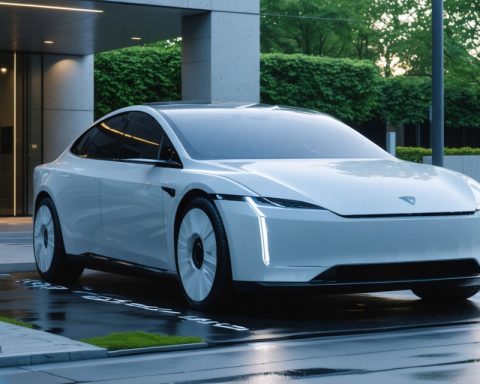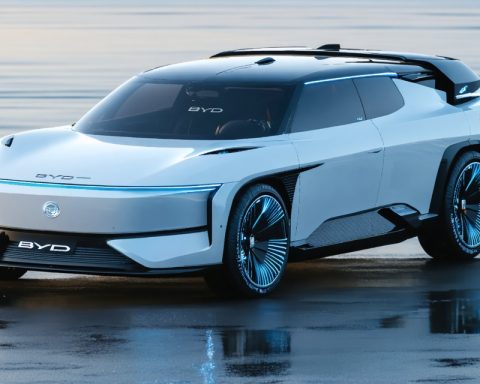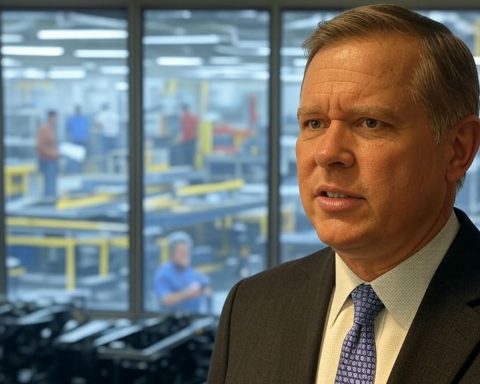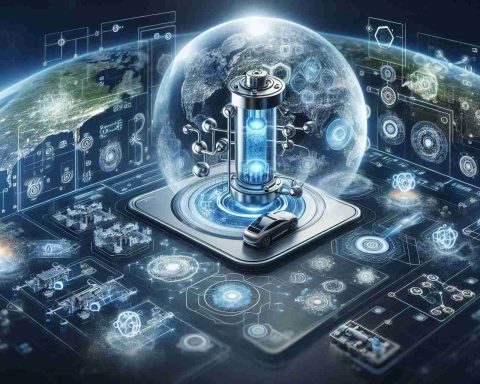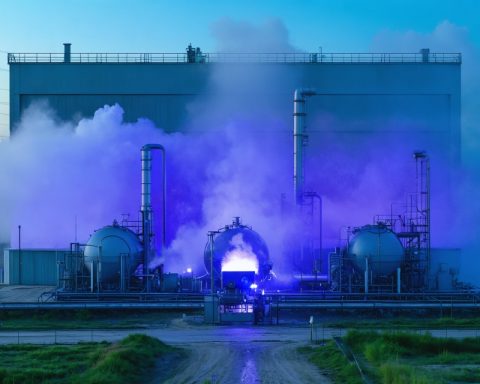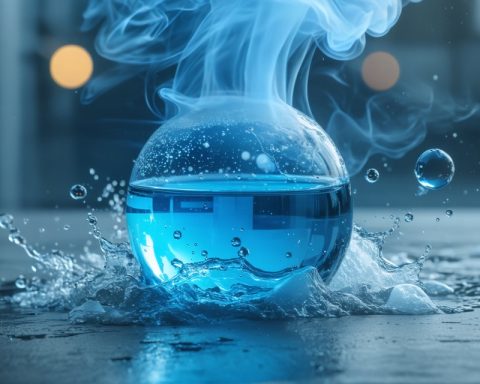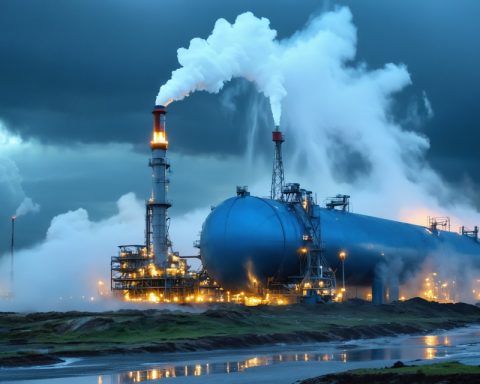- Clean hydrogen presents a promising, carbon-free energy solution but entails significant complexities and challenges to realize its potential.
- While hydrogen can revolutionize industries and reduce emissions, achieving truly clean production requires technological and infrastructural advancements.
- Renewable energy-driven electrolysis is key to producing clean hydrogen but remains cost-prohibitive, necessitating further investment in research and development.
- Governments face a balancing act between ambition and pragmatism, needing to foster innovation while managing uncertainties in return on investment.
- The path to a hydrogen economy involves addressing environmental benefits, technological challenges, and socioeconomic impacts in pursuit of a carbon-free future.
- Bold initiatives and informed decisions will be critical in transitioning from the potential of clean hydrogen to a practical energy revolution.
Amid the tumult of evolving energy landscapes, clean hydrogen emerges as a beacon of possibility. Yet, beneath the glossy veneer of grand aspirations lies a nuanced reality that demands scrutiny. Imagine a world where the winds of change propel economies forward without a carbon footprint. Clean hydrogen promises this future, yet the journey to achieve it brims with complexities.
The allure of hydrogen is undeniable. Its potential to revolutionize industries, power our cities, and clean our air resonates with leaders and innovators alike. But the road ahead is not without its pitfalls. From production challenges to economic implications, the path to a hydrogen economy requires more than lofty ideals; it demands groundbreaking innovation and unwavering determination.
Understanding hydrogen means peeling back layers of hype to reveal both its potential and its challenges. Unlike fossil fuels, hydrogen fuels combustion without emitting CO2. However, generating hydrogen that is truly clean—produced without relying on carbon-emitting processes—requires significant advancements in technology and infrastructure.
Renewable energy-driven electrolysis, where water is split into hydrogen and oxygen, is the holy grail of clean hydrogen production. Yet, the cost remains prohibitive. For nations to embrace this fuel of the future on a large scale, investment in research and development is crucial. Visionaries in the sector push the boundaries, seeking ways to slash costs and scale processes.
Governments worldwide now find themselves at a crossroads. Investing in hydrogen could secure a cleaner, sustainable future, but the return is still uncertain. Policy makers must tread carefully, balancing ambition with pragmatism, and fostering an environment where innovation can thrive.
The transformative power of clean hydrogen lies not just in technology, but in the commitment of industries and governments to create viable solutions. The hydrogen economy is an immense puzzle with pieces that include environmental benefits, technological hurdles, and the socioeconomic implications of a carbon-free future.
The takeaway? The road to revolutionizing energy through clean hydrogen is one lined with both obstacles and opportunities. Bold initiatives and informed decisions will define the trajectory of this promising resource. As we push past the hype, equipped with knowledge and purpose, the horizon reveals not just a dream, but a palpable reality waiting to unfold.
The Future of Energy: Clean Hydrogen’s Challenges and Opportunities Unveiled
Introduction
Clean hydrogen stands as a promising contender in the quest for sustainable energy solutions, offering a path to reduce carbon emissions and transform various industries. Yet, the journey to harness its full potential presents a complex array of challenges and opportunities. Here, we delve into the multifaceted world of clean hydrogen, examining its production methods, potential market impact, and the steps necessary to overcome existing hurdles.
How Clean Hydrogen Works
Understanding the Basics:
Hydrogen, when used as a fuel, produces energy by combining with oxygen to form water, emitting no carbon dioxide in the process. This makes it a clean energy alternative when produced sustainably.
Production Methods:
1. Electrolysis: The leading method involves splitting water into hydrogen and oxygen using electricity. The gold standard is relying on renewable energy sources for this process to ensure it’s carbon-neutral.
2. Steam Methane Reforming (SMR): Most hydrogen today is produced via SMR, which extracts hydrogen from methane but emits significant CO2. Carbon capture and storage (CCS) can mitigate these emissions to some extent.
3. Biomass Gasification: Converting organic materials into hydrogen and carbon monoxide, though still in developmental stages for wide-scale application.
Industry Trends and Market Forecasts
Growing Investments:
The global hydrogen economy is expected to grow substantially, with increased investments in the sector. According to the International Energy Agency (IEA), hyrogen production could account for 10% of global energy use by 2050.
Policy and Regulation:
Governments are establishing policies to foster hydrogen adoption. For example, the European Union has a hydrogen strategy aiming to produce 10 million tonnes of green hydrogen by 2030.
Real-World Use Cases and Applications
Transportation:
Hydrogen fuel cells are already powering buses, trucks, and trains, offering longer ranges than traditional battery electric vehicles. Companies like Toyota and Hyundai are pioneers in this space.
Industry and Manufacturing:
High-energy industries, such as steel and chemical production, can use hydrogen to significantly lower carbon footprints.
Energy Storage:
Hydrogen can store excess renewable energy, balancing supply and demand on power grids and enhancing energy security.
Challenges and Controversies
Production Costs:
Clean hydrogen still faces high costs, primarily due to the expensive electrolysis process. However, research and development efforts aim to reduce these costs.
Infrastructure Development:
A vast infrastructure network for hydrogen production, storage, and transport is essential but challenging and expensive to implement.
Environmental Concerns:
While hydrogen itself is clean, its production impact varies based on methods and energy sources used, emphasizing the need for truly renewable production pathways.
Pros and Cons Overview
Pros:
– Zero-emission energy carrier.
– High energy density.
– Versatile applications across sectors.
Cons:
– High production and infrastructure costs.
– Energy-intensive production processes.
– Requires significant technological and regulatory advancements.
Actionable Recommendations
– Invest in R&D: Support for technological innovation can bring down costs and accelerate clean hydrogen adoption.
– Policy Support: Governments should create favorable policies and incentives to boost hydrogen infrastructure and production.
– Public-Private Partnerships: Collaboration between governments and private sectors can drive larger-scale projects and innovation.
Conclusion
Clean hydrogen presents a tantalizing vision of a carbon-free future. While challenges exist, strategic investments, policy frameworks, and technological breakthroughs can pave the way for a hydrogen-driven economy. As industries and governments align their efforts, clean hydrogen moves closer to transforming the global energy landscape.
For more insights on energy solutions, visit International Energy Agency and International Renewable Energy Agency.
Start exploring the potential of hydrogen today and join the global movement towards a cleaner, more sustainable future.






